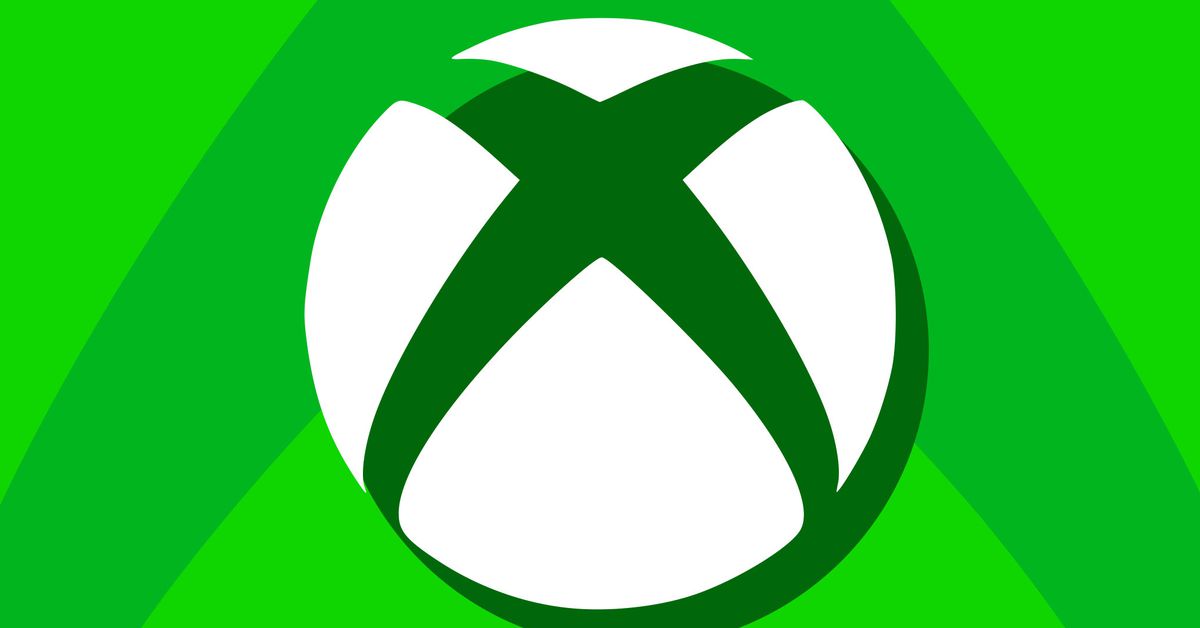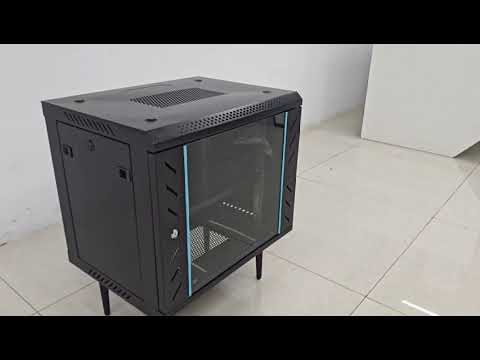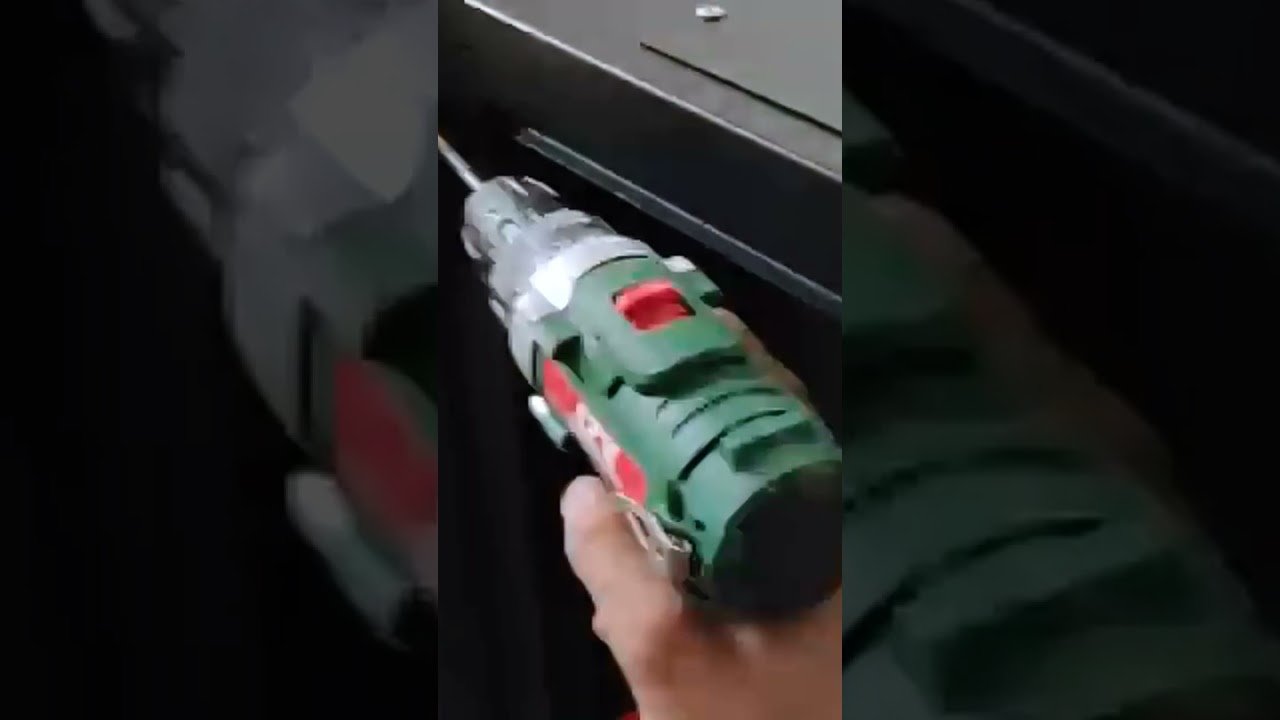The Internet Archive will come back within “days” following a cyberattack that brought down the organization’s vast digital library and the Wayback Machine, according to an update from founder Brewster Kahle. It’s been struggling due to a data breach and DDoS attack earlier this week that revealed the email addresses, screen names, password change timestamps, and other information associated with more than 31 million unique email addresses.
Technology
The Internet Archive is still down but will return in ‘days, not weeks’

Currently, if you try to access the Internet Archive’s website, you’ll see a notice that says it’s “temporarily” offline. Links to the Wayback Machine also won’t load.
“The data is safe. Services are offline as we examine and strengthen them. Sorry, but needed. @internetarchive staff is working hard. Estimated Timeline: days, not weeks,” writes Kahle.
After a pop-up from a purported hacker claimed the archive had suffered a “catastrophic security breach” earlier this week, Have I Been Pwned founder Troy Hunt confirmed he’d received a file with the stolen data, so anyone registered on his site can get an alert if it includes their information.
Technology
NALA founder Ben Gulak on how to navigate the art market downturn with big data and direct connections

Ben Gulak, founder of the Networked Artistic Learning Algorithm (NALA), has seamlessly combined his diverse talents as a computer scientist, entrepreneur and professional painter to transform the art market. With the shift in the art landscape driven by external factors, the visionary shares valuable insights into navigating it by leveraging vast data and democratizing access to art.
Following the recent economic and geopolitical challenges, Ben shares an interesting perspective on the current art market. “The market is experiencing a decline,” he says. No segment is untouched — emerging artists, established names, galleries and even art fairs are all feeling the squeeze. “Almost every artist offers massive discounts to sell. Galleries are admitting sales are down, and fairs have been lackluster, to say the least,” the founder adds.
A large share of industry veterans are quick to say that this downturn was unexpected, but Ben argues many of the signs of fallout have been around for a while. Annual market reports showcased record numbers in the past few years, but concerns were growing at the lower end of the market.
Although the market’s restructuring is devastating for talent and galleries, the industry must become more resilient in the face of evolving challenges. Ben believes this era is an inevitable phase in the market’s cyclical nature, and will eventually birth a newer, more value-driven sector.
Several factors may have contributed to the art market’s restructuring. Ben believes the ultra-high cost of living is the main reason why art has become less important. “If people struggle to keep their homes and cars filled with gas and buy groceries, then there’s simply less disposable money floating around,” Ben says. “Maybe on the high end of the market, people are holding onto their money and waiting on geopolitical issues, but I think most people are just struggling right now, and we have to accept that.”
In the first half of 2024, the art market saw a startling drop in sales. Galleries, artists and collectors have grappled with this setback in different ways. Overall, market inefficiencies have exacerbated and even existed when spending was higher due to low interest rates. The sector’s problems have persisted quietly in the background. “Galleries have dominated the industry, being the gatekeepers, determining who is deemed valuable, who is worth collecting and who can succeed,” Ben says. “The result is that the majority of the global artistic talent pool is kept out of the marketplace, and we are stuck in a quagmire of overpriced, market-manipulated items. With the explosion of the internet, a few big platforms have stepped in to handle online sales. But these cater almost exclusively to galleries, creating a fee structure that’s roughly 30% to the platform, 50% to the gallery, and whatever is left goes to the artists. The buyer, meanwhile, often still has a luxury import duty on the art they purchased.”
As people become more value-conscious, these fees and middlemen become undesirable. Ben believes a buyer’s market where buyers have the ability to go directly to artists and purchase items at a cost they can afford will become the norm.
Ultimately, art is worth what somebody is willing to pay for it. “If you are looking to spend less than $20,000 on a work of art, you should get something you genuinely love and be happy for its artistic value, not because it might go up in value. I understand why some collectors are pulling their work from auctions to avoid seeing their collection value decrease. But that doesn’t mean sales can’t still happen. We are in a buyer’s market right now. Every artist is willing to negotiate, and every artist is hungry to keep doing what they love,” Ben explains.
The art market is poised to recover at some point in the future as the demand for original, quality creations will never completely vanish. Humans inherently require some form of expression and creativity to find fulfillment in life, making art an indivisible part of society’s DNA. Ben echoes these sentiments, “The market lost sight of the importance of merit, allowing the cream to rise to the top, and instead, we got a very messy, bloated industry that needs to right itself. We need to rethink the entire sales process of how art is discovered and acquired. Too many artists were kept on the outskirts, and buyers never had an opportunity to truly select the best items with the old system. We need a leveling of the playing field and allow art lovers to trust their instincts, deal directly with artists and see what happens. As long as we have a business model that caters to the old system, we aren’t looking to the future. Every industry on the planet is going buyer/seller-direct.”
Soon, Ben predicts a shift toward value-driven demand and hopes a meritocratic ecosystem prevails, rewarding true artistic and creative talent while filtering out derivative and copycat artists. Authenticity must be celebrated. After all, art is meant to personify the human experience, make statements about social issues, or simply capture the beauty of life. If talent isn’t encouraged to march to their own drum, the prevalence of generic art will only grow.
After having straddled both the art world as a painter and agent of sorts in the tech world, Ben built NALA [Networked Artistic Learning Algorithm] as a way to broaden the art market and crack it wide open. “I believe that if we can create a marketplace where all artists can participate and buyers have access to see the best of what’s available and deal directly with artists, we have an opportunity to revolutionize the industry,” he says.
NALA works by matching art lovers with artists based on their unique personal preferences. Every time an art lover engages with an image on NALA, it learns their preferences and can find more artwork suited to them. This makes it possible to efficiently connect artists with art lovers and take no commissions. Ben is anticipating a major transformation in the art market within the next five years thanks to NALA’s pioneering technology. “With my NALA, we can create an open marketplace where all buyers have access to stunning pieces that artists are fairly compensated for,” Ben says.
VentureBeat newsroom and editorial staff were not involved in the creation of this content.
Technology
Xbox Cloud Gaming will let you stream your own games in November

Microsoft is planning to support the streaming of Xbox game libraries next month. Sources familiar with Microsoft’s plans tell The Verge that the company is getting ready to test the ability to stream games that you own that aren’t part of the existing Xbox Game Pass library.
As part of a long-running project known as Project Lapland inside of Microsoft, the software giant has been readying its Xbox Cloud Gaming servers to be able to support streaming thousands of games. I’m told Microsoft will first test its new Xbox Cloud Gaming streaming capabilities with Xbox Insiders in November, before expanding them to more Xbox users and more games.
The Xbox Cloud Gaming expansion comes in the same month Microsoft plans to enable game purchases in its Xbox mobile app for Android in the US. Microsoft is able to do this thanks to a court ruling earlier this week that forces Google to stop requiring Google Play Billing for apps in the Play Store on November 1st.
Xbox president Sarah Bond revealed yesterday that “starting in November, players will be able to play and purchase Xbox games directly from the Xbox App on Android.” Once Microsoft’s work to enable a full game library on Xbox Cloud Gaming is complete, you’ll be able to purchase an Xbox game on Android and immediately stream it to your device.
Project xCloud was supposed to launch with game library streaming in 2020. Microsoft then announced it would support your game library on Xbox Cloud Gaming in 2022, but it never launched that year. I understand the work has been complicated by having to prepare key infrastructure for thousands of games, instead of the hundreds that currently exist on Xbox Game Pass. While thousands of games will soon be available through Xbox Cloud Gaming, I’m told some publishers will hold certain games back due to licensing requirements or deals.
Microsoft is also working on a browser-based Xbox mobile store that it was originally planning to launch in July. The store will initially include deals and in-game items but will grow to cover first-party games eventually. Microsoft said in August that testing had begun on the web-based mobile store and that “work is progressing well and we will have more to share in the future.”
Update, October 11th: Article updated to mention original Project xCloud plans.
Servers computers
9u network cabinet server rack data cabinet

Beautiful appearance, like a robot, hhh🤣
For more information, please contact me.
WhatsApp:86 18830632263
#network #table #china #cabinet #computer #serverrack #commercialrealestate
source
Technology
I think I’ve found the most underrated iPhone feature – and you might be surprised by what it is

While I resent the accusation, I have from time to time been branded as clumsy. I used to rarely drop things, but in more recent times I’ve found myself knocking over glasses, ripping clothes, and damaging a frankly stupid amount of phones; most of these were test units, but still.
Despite this tendency for pricey flagship phones to hop out of my hands or decide to miss my pocket, I never use a case with such smartphones. Even with some of the best foldable phones – the most fragile of handsets – I eschew the case life.
Am I an idiot? Probably. But I do like to see the industrial design of the best phones, rather than swaddle them in less-than-lovely plastic.
Equally, all the boasting about the best Android phones making use of Gorilla Glass has encouraged my apathy when it comes to extra phone protection. But then one falls, either by my own hand or though sheer physics, to the floor, and cracks, chips or dents.
Except, that is, for the iPhone 15 Pro Max.
I’ve harped on about the benefit of titanium on phones, which has helped the large iPhone withstand all manner of chassis punishment; it won’t patina though.
But I’ve yet to extoll the brilliance of Apple’s Ceramic Shield glass. Introduced with the iPhone 12, I’ve always simply assumed it was Apple’s answer to Corning’s Gorilla Glass. Yet I now feel I’ve slept on how good Ceramic Shield is.
In some 10 months of use, my iPhone 15 Pro Max has gone through the wringer. It’s slipped off my sofa, bumped into my desk, and fallen to the ground, and each time it’s emerged unscathed.
Shields up!

The most impressive example was back in August when I was visiting Liverpool. I chucked the phone onto a hotel bed, and given the heft of the iPhone 15 Pro Max, it bounced with gusto from the duvet and flew through an open bathroom door to land face-down with a sickening clatter on the tiled floor.
I thought “that’s it, the phone is done for,” and thanked my foresight for having a spare Samsung Galaxy S24 Ultra to hand.
But as I gingerly lifted the iPhone from the floor, turning it over with dread, I saw that it was totally undamaged. I couldn’t find a single ding or dent in it – even the protruding camera module looked fresh and fine.
I was genuinely surprised. Such falls have ruined other phones that have had the misfortune to trigger clumsy-Roland mode.
And it had me thinking that despite my love of the Action button, or the consistency of the camera systems, Apple’s Ceramic Shield glass might just be my favorite feature of recent iPhones.
So if you’re after a durable phone that also looks stylish, rather than doing an impression of a brick, I simply have to give the Ceramic Shield iPhones my seal of approval – you go hunting for one on our best iPhone deals page.
You might also like
Servers computers
#viral 12U rack installation
Technology
NYT Mini Crossword today: puzzle answers for Saturday, October 12


The New York Times has introduced the next title coming to its Games catalog following Wordle’s continued success — and it’s all about math. Digits has players adding, subtracting, multiplying, and dividing numbers. You can play its beta for free online right now.
In Digits, players are presented with a target number that they need to match. Players are given six numbers and have the ability to add, subtract, multiply, or divide them to get as close to the target as they can. Not every number needs to be used, though, so this game should put your math skills to the test as you combine numbers and try to make the right equations to get as close to the target number as possible.
Players will get a five-star rating if they match the target number exactly, a three-star rating if they get within 10 of the target, and a one-star rating if they can get within 25 of the target number. Currently, players are also able to access five different puzzles with increasingly larger numbers as well. I solved today’s puzzle and found it to be an enjoyable number-based game that should appeal to inquisitive minds that like puzzle games such as Threes or other The New York Times titles like Wordle and Spelling Bee.
In an article unveiling Digits and detailing The New York Time Games team’s process to game development, The Times says the team will use this free beta to fix bugs and assess if it’s worth moving into a more active development phase “where the game is coded and the designs are finalized.” So play Digits while you can, as The New York Times may move on from the project if it doesn’t get the response it is hoping for.
Digits’ beta is available to play for free now on The New York Times Games’ website
-

 Science & Environment3 weeks ago
Science & Environment3 weeks agoHyperelastic gel is one of the stretchiest materials known to science
-

 Technology3 weeks ago
Technology3 weeks agoWould-be reality TV contestants ‘not looking real’
-

 Science & Environment3 weeks ago
Science & Environment3 weeks agoHow to unsnarl a tangle of threads, according to physics
-

 Science & Environment3 weeks ago
Science & Environment3 weeks ago‘Running of the bulls’ festival crowds move like charged particles
-

 Womens Workouts3 weeks ago
Womens Workouts3 weeks ago3 Day Full Body Women’s Dumbbell Only Workout
-

 Science & Environment3 weeks ago
Science & Environment3 weeks agoMaxwell’s demon charges quantum batteries inside of a quantum computer
-

 Science & Environment3 weeks ago
Science & Environment3 weeks agoLiquid crystals could improve quantum communication devices
-

 Science & Environment3 weeks ago
Science & Environment3 weeks agoQuantum ‘supersolid’ matter stirred using magnets
-

 Science & Environment3 weeks ago
Science & Environment3 weeks agoSunlight-trapping device can generate temperatures over 1000°C
-

 Science & Environment3 weeks ago
Science & Environment3 weeks agoITER: Is the world’s biggest fusion experiment dead after new delay to 2035?
-
News4 weeks ago
the pick of new debut fiction
-

 Science & Environment3 weeks ago
Science & Environment3 weeks agoHow to wrap your mind around the real multiverse
-

 Science & Environment3 weeks ago
Science & Environment3 weeks agoWhy this is a golden age for life to thrive across the universe
-

 Science & Environment3 weeks ago
Science & Environment3 weeks agoNerve fibres in the brain could generate quantum entanglement
-

 News3 weeks ago
News3 weeks agoOur millionaire neighbour blocks us from using public footpath & screams at us in street.. it’s like living in a WARZONE – WordupNews
-

 Science & Environment3 weeks ago
Science & Environment3 weeks agoQuantum forces used to automatically assemble tiny device
-

 Technology2 weeks ago
Technology2 weeks agoIs sharing your smartphone PIN part of a healthy relationship?
-

 Science & Environment2 weeks ago
Science & Environment2 weeks agoX-rays reveal half-billion-year-old insect ancestor
-

 Science & Environment3 weeks ago
Science & Environment3 weeks agoA slight curve helps rocks make the biggest splash
-

 Science & Environment3 weeks ago
Science & Environment3 weeks agoTime travel sci-fi novel is a rip-roaringly good thought experiment
-

 Science & Environment3 weeks ago
Science & Environment3 weeks agoLaser helps turn an electron into a coil of mass and charge
-

 Science & Environment3 weeks ago
Science & Environment3 weeks agoPhysicists are grappling with their own reproducibility crisis
-
Business2 weeks ago
Eurosceptic Andrej Babiš eyes return to power in Czech Republic
-

 Science & Environment3 weeks ago
Science & Environment3 weeks agoNuclear fusion experiment overcomes two key operating hurdles
-

 News4 weeks ago
News4 weeks ago▶️ Hamas in the West Bank: Rising Support and Deadly Attacks You Might Not Know About
-

 News3 weeks ago
News3 weeks agoYou’re a Hypocrite, And So Am I
-

 Sport3 weeks ago
Sport3 weeks agoJoshua vs Dubois: Chris Eubank Jr says ‘AJ’ could beat Tyson Fury and any other heavyweight in the world
-

 Science & Environment4 weeks ago
Science & Environment4 weeks agoCaroline Ellison aims to duck prison sentence for role in FTX collapse
-

 News3 weeks ago
News3 weeks ago▶️ Media Bias: How They Spin Attack on Hezbollah and Ignore the Reality
-

 Science & Environment3 weeks ago
Science & Environment3 weeks agoA new kind of experiment at the Large Hadron Collider could unravel quantum reality
-
Business2 weeks ago
Should London’s tax exiles head for Spain, Italy . . . or Wales?
-

 Technology2 weeks ago
Technology2 weeks ago‘From a toaster to a server’: UK startup promises 5x ‘speed up without changing a line of code’ as it plans to take on Nvidia, AMD in the generative AI battlefield
-

 Football2 weeks ago
Football2 weeks agoFootball Focus: Martin Keown on Liverpool’s Alisson Becker
-

 Science & Environment3 weeks ago
Science & Environment3 weeks agoRethinking space and time could let us do away with dark matter
-

 News4 weeks ago
News4 weeks agoNew investigation ordered into ‘doorstep murder’ of Alistair Wilson
-
News3 weeks ago
The Project Censored Newsletter – May 2024
-

 Technology2 weeks ago
Technology2 weeks agoQuantum computers may work better when they ignore causality
-

 MMA2 weeks ago
MMA2 weeks agoConor McGregor challenges ‘woeful’ Belal Muhammad, tells Ilia Topuria it’s ‘on sight’
-

 Sport2 weeks ago
Sport2 weeks agoWatch UFC star deliver ‘one of the most brutal knockouts ever’ that left opponent laid spark out on the canvas
-

 News3 weeks ago
News3 weeks agoIsrael strikes Lebanese targets as Hizbollah chief warns of ‘red lines’ crossed
-

 Science & Environment3 weeks ago
Science & Environment3 weeks agoA tale of two mysteries: ghostly neutrinos and the proton decay puzzle
-

 Science & Environment3 weeks ago
Science & Environment3 weeks agoFuture of fusion: How the UK’s JET reactor paved the way for ITER
-

 Technology2 weeks ago
Technology2 weeks agoGet ready for Meta Connect
-
Business2 weeks ago
Ukraine faces its darkest hour
-

 Health & fitness3 weeks ago
Health & fitness3 weeks agoThe secret to a six pack – and how to keep your washboard abs in 2022
-

 Technology4 weeks ago
Technology4 weeks agoThe ‘superfood’ taking over fields in northern India
-

 Science & Environment3 weeks ago
Science & Environment3 weeks agoUK spurns European invitation to join ITER nuclear fusion project
-

 Science & Environment3 weeks ago
Science & Environment3 weeks agoWhy we need to invoke philosophy to judge bizarre concepts in science
-

 News3 weeks ago
News3 weeks agoWhy Is Everyone Excited About These Smart Insoles?
-

 Health & fitness2 weeks ago
Health & fitness2 weeks agoThe 7 lifestyle habits you can stop now for a slimmer face by next week
-

 CryptoCurrency3 weeks ago
CryptoCurrency3 weeks agoCardano founder to meet Argentina president Javier Milei
-
Politics3 weeks ago
UK consumer confidence falls sharply amid fears of ‘painful’ budget | Economics
-

 MMA3 weeks ago
MMA3 weeks agoRankings Show: Is Umar Nurmagomedov a lock to become UFC champion?
-

 Science & Environment3 weeks ago
Science & Environment3 weeks agoMeet the world's first female male model | 7.30
-

 News3 weeks ago
News3 weeks agoFour dead & 18 injured in horror mass shooting with victims ‘caught in crossfire’ as cops hunt multiple gunmen
-

 Womens Workouts3 weeks ago
Womens Workouts3 weeks ago3 Day Full Body Toning Workout for Women
-

 Technology3 weeks ago
Technology3 weeks agoRobo-tuna reveals how foldable fins help the speedy fish manoeuvre
-

 Science & Environment3 weeks ago
Science & Environment3 weeks agoPhysicists have worked out how to melt any material
-

 Health & fitness3 weeks ago
Health & fitness3 weeks agoThe maps that could hold the secret to curing cancer
-

 Science & Environment3 weeks ago
Science & Environment3 weeks agoBeing in two places at once could make a quantum battery charge faster
-

 News4 weeks ago
News4 weeks agoHow FedEx CEO Raj Subramaniam Is Adapting to a Post-Pandemic Economy
-

 CryptoCurrency3 weeks ago
CryptoCurrency3 weeks agoDecentraland X account hacked, phishing scam targets MANA airdrop
-

 CryptoCurrency3 weeks ago
CryptoCurrency3 weeks agoLow users, sex predators kill Korean metaverses, 3AC sues Terra: Asia Express
-

 Womens Workouts3 weeks ago
Womens Workouts3 weeks agoBest Exercises if You Want to Build a Great Physique
-

 Womens Workouts3 weeks ago
Womens Workouts3 weeks agoEverything a Beginner Needs to Know About Squatting
-

 TV3 weeks ago
TV3 weeks agoCNN TÜRK – 🔴 Canlı Yayın ᴴᴰ – Canlı TV izle
-

 Science & Environment3 weeks ago
Science & Environment3 weeks agoCNN TÜRK – 🔴 Canlı Yayın ᴴᴰ – Canlı TV izle
-

 Servers computers2 weeks ago
Servers computers2 weeks agoWhat are the benefits of Blade servers compared to rack servers?
-

 Technology2 weeks ago
Technology2 weeks agoThe best robot vacuum cleaners of 2024
-

 News3 weeks ago
News3 weeks agoChurch same-sex split affecting bishop appointments
-

 Politics3 weeks ago
Politics3 weeks agoTrump says he will meet with Indian Prime Minister Narendra Modi next week
-

 Sport3 weeks ago
Sport3 weeks agoUFC Edmonton fight card revealed, including Brandon Moreno vs. Amir Albazi headliner
-

 CryptoCurrency3 weeks ago
CryptoCurrency3 weeks agoEthereum is a 'contrarian bet' into 2025, says Bitwise exec
-

 Science & Environment3 weeks ago
Science & Environment3 weeks agoHow one theory ties together everything we know about the universe
-
Business4 weeks ago
JPMorgan in talks to take over Apple credit card from Goldman Sachs
-

 Science & Environment3 weeks ago
Science & Environment3 weeks agoQuantum time travel: The experiment to ‘send a particle into the past’
-

 Science & Environment3 weeks ago
Science & Environment3 weeks agoTiny magnet could help measure gravity on the quantum scale
-

 Science & Environment3 weeks ago
Science & Environment3 weeks agoMost accurate clock ever can tick for 40 billion years without error
-

 CryptoCurrency3 weeks ago
CryptoCurrency3 weeks agoBitcoin miners steamrolled after electricity thefts, exchange ‘closure’ scam: Asia Express
-

 CryptoCurrency3 weeks ago
CryptoCurrency3 weeks agoDorsey’s ‘marketplace of algorithms’ could fix social media… so why hasn’t it?
-

 CryptoCurrency3 weeks ago
CryptoCurrency3 weeks agoDZ Bank partners with Boerse Stuttgart for crypto trading
-

 CryptoCurrency3 weeks ago
CryptoCurrency3 weeks agoBitcoin bulls target $64K BTC price hurdle as US stocks eye new record
-

 CryptoCurrency3 weeks ago
CryptoCurrency3 weeks agoBlockdaemon mulls 2026 IPO: Report
-
Business3 weeks ago
Thames Water seeks extension on debt terms to avoid renationalisation
-
Politics3 weeks ago
‘Appalling’ rows over Sue Gray must stop, senior ministers say | Sue Gray
-

 CryptoCurrency3 weeks ago
CryptoCurrency3 weeks agoCoinbase’s cbBTC surges to third-largest wrapped BTC token in just one week
-

 News2 weeks ago
News2 weeks agoUS Newspapers Diluting Democratic Discourse with Political Bias
-

 Technology2 weeks ago
Technology2 weeks agoMicrophone made of atom-thick graphene could be used in smartphones
-

 Technology3 weeks ago
Technology3 weeks agoiPhone 15 Pro Max Camera Review: Depth and Reach
-

 News3 weeks ago
News3 weeks agoBrian Tyree Henry on voicing young Megatron, his love for villain roles
-

 Science & Environment3 weeks ago
Science & Environment3 weeks agoHow do you recycle a nuclear fusion reactor? We’re about to find out
-

 CryptoCurrency3 weeks ago
CryptoCurrency3 weeks agoRedStone integrates first oracle price feeds on TON blockchain
-

 CryptoCurrency3 weeks ago
CryptoCurrency3 weeks ago‘No matter how bad it gets, there’s a lot going on with NFTs’: 24 Hours of Art, NFT Creator
-
Business3 weeks ago
How Labour donor’s largesse tarnished government’s squeaky clean image
-

 News3 weeks ago
News3 weeks agoBrian Tyree Henry on voicing young Megatron, his love for villain roles
-

 Travel3 weeks ago
Travel3 weeks agoDelta signs codeshare agreement with SAS
-

 Politics2 weeks ago
Politics2 weeks agoHope, finally? Keir Starmer’s first conference in power – podcast | News
-

 Technology2 weeks ago
Technology2 weeks agoUniversity examiners fail to spot ChatGPT answers in real-world test
-

 CryptoCurrency3 weeks ago
CryptoCurrency3 weeks agoLouisiana takes first crypto payment over Bitcoin Lightning
-

 CryptoCurrency3 weeks ago
CryptoCurrency3 weeks agoCrypto scammers orchestrate massive hack on X but barely made $8K


You must be logged in to post a comment Login